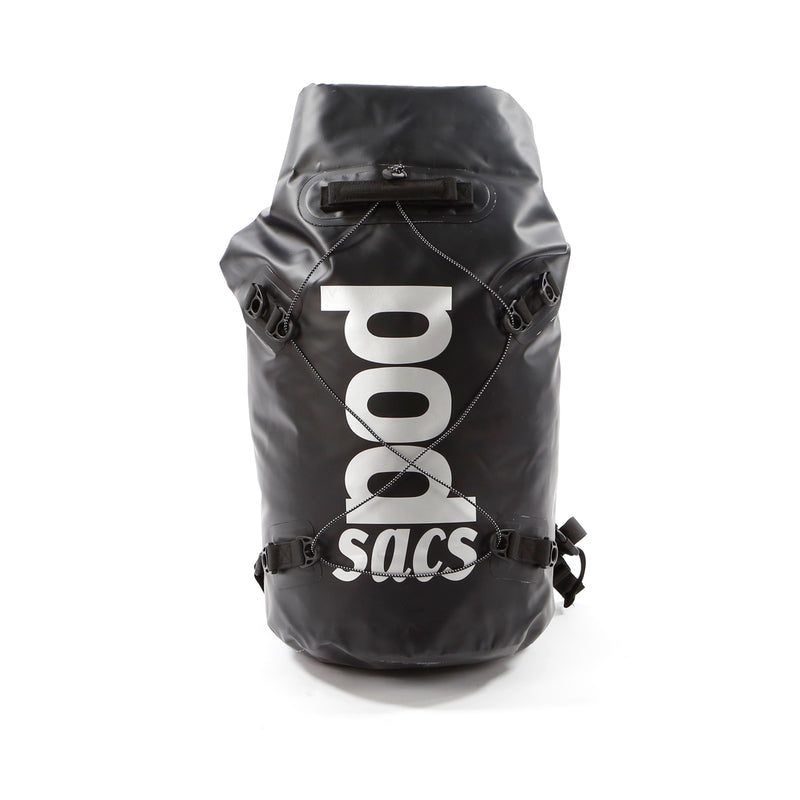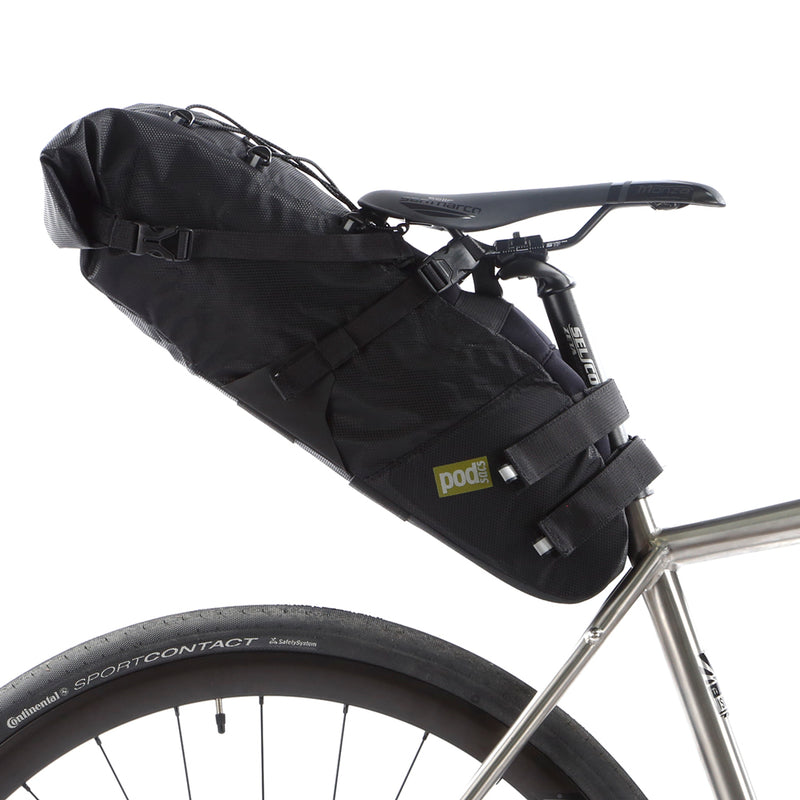Bikepacking: The Ultimate Guide to Getting Started
12 May 2023

What is bikepacking?
Bikepacking is a development of cycle touring involving multi-day rides with all your equipment strapped to your bike. It allows you to see and experience the landscape at a perfect pace for exploring – not so fast you miss everything, not so slow you can’t cover reasonable ground -- and with plenty of opportunities to stop,admire the view and check out interesting sites and features along the way. Add to this the possibility of sleeping out under the stars and you’ve got all the ingredients of a great experience.
If you are sold on the idea and looking to go out on your first bikepacking trip, then the warm summer months are a great time to get started, but it can be tricky to know what you need to prepare to make your outing a success. Below, we explain how to plan a beginner’s bikepacking trip.
Bike choice and carrying equipment
Now you’ve decided you want to give bikepacking a try, firstly you need to look at what kit you already have to help on your adventure. Depending on what you have, you may need to consider getting some specialist equipment such as bikepacking bags and a good quality bikepacking bike.
If you are looking to give it a go but aren’t sure if it is for you and you don’t want to invest in expensive kit or even a new bike just yet, consider carefully what you already have and what type of trip you can realistically achieve before you start planning locations.
While the bike you use needs to be in good condition and in full working order, it also needs to be suited to the terrain you are going to cover. Whatever you choose, you will need to be familiar with the bike and be able to carry out simple maintenance tasks that might crop up on your trip, such as fixing a puncture or adjusting gear set up. You will also need to have the relevant tools and spares you may need.
As well as your bike, you need to consider what type of trip you are taking. What will your sleeping arrangements be? What are you going to do about food and water? How many days will you be going for? The answers to these questions will determine how much and what kind of kit you need to take, and how you are going to carry it.
Obviously, specialist bikepacking bags are a good option that are designed for bikepacking trips. However, if you don’t want to invest just yet and you already have a rack and panniers these could certainly get you started, depending on how technical your ride will be. Cycling with a large rucksack is neither advisable nor enjoyable, so you do need to think carefully about how you carry your kit.
Route planning, sleeping and eating
For your first bikepacking trips, it would be advisable to keep it simple and then build up to more challenging rides as you get used to it and understand more about what kit you need, how to pack it, etc. Make sure you choose a route that matches your fitness level and experience.
When it comes to route planning, there are a lot of resources available, from specialist books and publications to various websites that publish route ideas and itineraries. You can also use specialist apps like Komoot, or even Google Maps to help you plan a route. When planning, consider the distance, elevation and the terrain type. Depending on your experience, allow more time than you think to achieve your mileage.
Plan a trip somewhere you are familiar with, make it for no more than 2 nights. Understand what your options are for refuelling or for getting help.
Wild camping is great but there are things you need to understand to be able to do it safely and legally, so for initial trips it is best to go for a recognised campsite if possible until you’ve got your system sorted and you know what you are doing.
You don’t have to rough it under the stars – there’s no reason not to use a B&B or Youth Hostel, for example, if it’s convenient for your route. If you’ve planned and booked ahead, that’s a lot less kit you need to carry!
Once you know where you are going and what your route is, this will enable you to decide what kit you need to take, as well as how much food and water you’ll need.
Depending on your route, you may be able to eat along the way and re-supply at various shops or cafes. However, you should only depend on this if you have researched first – for example, it’s important to check opening days and hours, especially if your trip is a remote one.
Make sure you check and test your gear before setting off, particularly if it’s something new or something you’ve not used in a while. If your trip is going to be off grid, it could be a good idea to do a preparatory trip to a local campsite so you can test out your system first. This will give you a chance to understand what works best for you and make any adjustments.
When it comes to packing, you need to think light and efficient. Keep the weight down and don’t take too much stuff – think carefully about everything you pack! Try and distribute weight evenly across your bike. Anything heavy needs to be as close to the centre as possible. Make sure at least your essentials (insulation layer and sleeping bag), if not everything, are in waterproof bags.
Keep an eye on the weather and, if it is possible, try to be flexible with dates in case the weather is bad. For a first trip, it is probably better to reschedule if you can rather than grit it out and not enjoy it, or even have to abandon and seek refuge!
If you are on your own, it’s always best to leave a route plan with someone. It’s also key to ensure you understand about your power requirements for a phone or GPS device and any bike or helmet lights and that you have a battery pack for a recharge.
It is always best to have a hard map of your route – don’t just rely on an electronic device for navigation.
Hit the road! Remember to take it easy and enjoy the landscape, take breaks when you need to and don’t pass up on refuelling opportunities you may spot along the way. Don’t be afraid to change your plans if you find it necessary and make sure you keep tabs on your progress and understand how you are doing against your route plan.
Kit suggestions
Providing an exhaustive list is fraught with difficulties – what you take is subjective and also depends on a lot of factors to do with your trip, such as the time of year, weather conditions and so on. The list below is a suggestion to get you started, or you can read our dedicated bikepacking gear checklist here.
-Never rely on your trip being dry. Use common sense for items you need depending on the likely weather and season.
-Helmet
-First Aid Kit
-Head torch
-Survival Bag
-Whistle
-Fully charged phone and the means to keep it dry. Remember to consider if you need a battery pack.
-GPS/navigation device,a hard copy of your route map and a compass (make sure you know how to use it!)
-Waterproof jacket
-Insulation layer
-Adequate food and drink and some emergency rations
-Sleeping bag and sleeping mat and shelter (tarp or tent) if required for your trip.
-Quality bike tool kit appropriate for the fittings on your bike.
-Pump, spare inner tube, tyre lever, tubeless repair kit (if tubeless set up), patches for inner tube and a tyre patch (or ‘boot’) for rips.
-Spare mech hanger
-Spare chain links/quick link
-Spare brake pads
-A few zip ties and some gaffer tape if it’s possible to wrap it around your pump.
-Front and rear bike lights, charged
Why you should consider bikepacking
Bikepacking is a fantastic way to explore the great outdoors on two wheels. With just a bike and some basic gear, you can venture into the wilderness and experience some of the most beautiful scenery the world has to offer.
If you still aren’t persuaded, consider these other great reasons to start bikepacking.
Get off the grid
Getting away from the hustle and bustle of a busy life is an attractive proposition for many, and bikepacking is an excellent way to do it. While you should always keep a phone or other form of communication with you in case you get lost or need assistance, a bikepacking trip is an opportunity to become disconnected from the internet and social media and get back to nature.
See the sights
One of the best things about bikepacking is that you can go anywhere. You’re not restricted to places you can drive to, you don’t have to worry about paying for parking and, in many cases, you don’t have to think about getting back to the hotel before dark. The world is your oyster. Because of this, you can spend as much time as you like seeing the sights along your journey - especially the ones you wouldn’t get to see on a regular holiday.
Protect the environment
Bikepacking also has its benefits when compared to other forms of travel for the simple reason that bikes are one of the least environmentally damaging types of transportation out there. And when you add in camping outdoors and cooking for yourself, you can have much more control over how your trip impacts the environment than you would otherwise.
The key to this is to remember to always respect your surroundings. No littering, no burned ground or destruction of habitats, and always be mindful of how your presence affects the humans, plants and animals around you.
Spend time with your loved ones
Finally, a family or friends bikepacking trip is a great way to take some time away from the concerns of your everyday life and spend some quality time with your loved ones. It can also be a great opportunity to try something new!






